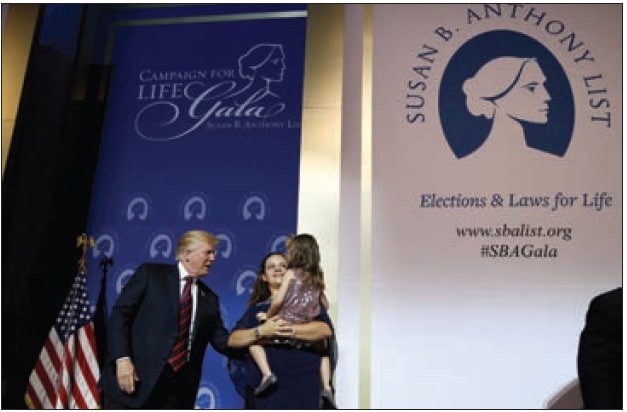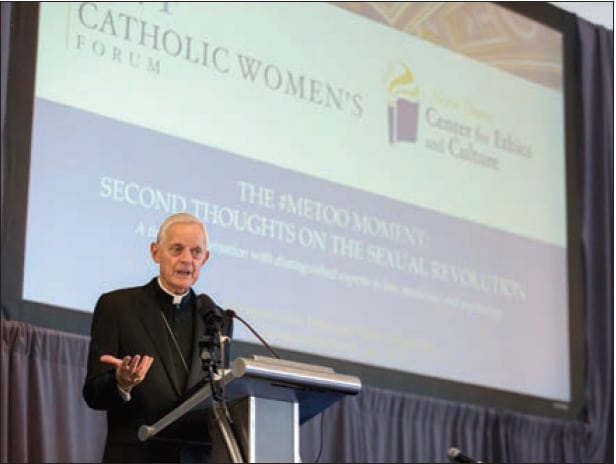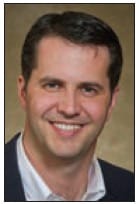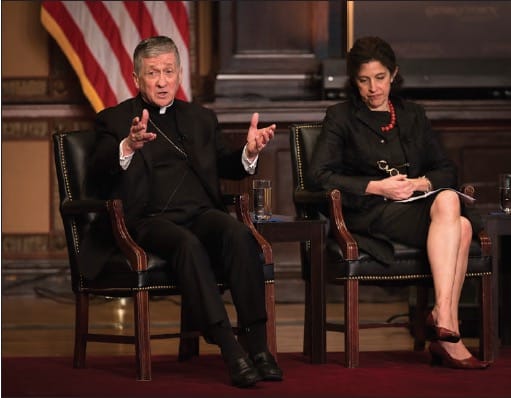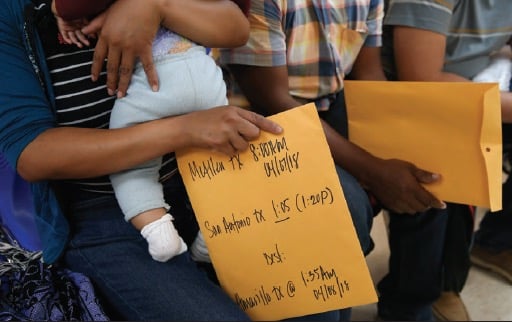Amid days of political tumult in the White House, ranging from President Donald Trump’s escalating protests against the Department of Justice’s Russian probe to the uncertain state of the planned summit with North Korean leader Kim Jong Un, some good news emerged in mid-May for the pro-life movement.
The Trump administration told national media outlets on May 17 that it was looking to prohibit clinics that receive Title X federal family-planning funds from performing abortions or referring women to those services. Abortion providers that receive Title X funds, such as Planned Parenthood, would be required to physically and financially separate their abortion services from their family-planning programs.
The proposed policy, which the president officially unveiled in a May 22 speech to the Susan B. Anthony List, a national pro-life organization, would have far-reaching effects and could deprive many abortion providers of tens of millions of dollars they receive each year in federal tax funds. Planned Parenthood and its allies are characterizing the proposed policy as a “gag rule” and an attack on women’s rights that would have “devastating effects” for women and those seeking sexual and reproductive health care services.
Separating services
But several pro-life leaders told Our Sunday Visitor that the Trump administration’s so-called “Protect Life Rule” is an important step to ensuring that federal tax funds are not used in such a way to support the abortion industry.
| Regulatory Language |
|---|
|
The proposed rule from the U.S. Department of Health and Human Services reads in part:
Title X programs may not directly or indirectly facilitate, promote, or encourage abortion in any way. For example, referral is an integral part of the provision of any method of family planning. When provided for abortion, a referral necessarily treats abortion as a method of family planning and runs afoul of the statute. Similarly, Title X programs that subsidize other programs where abortion is a method of family planning, through infrastructure building, cost sharing, or otherwise, run afoul of the statute. Congress made clear that “none” of the Title X funds should go to support such programs.
|
“We certainly think there is a great need for this, to make sure that abortion is not another method of family planning that is promoted and provided for under the Title X family planning program,” said Greg Schleppenbach, the associate director of the U.S. Conference of Catholic Bishops’ Secretariat of Pro-Life Activities.
Schleppenbach told OSV that while existing federal law prohibits federal tax funds from paying for abortions — with exceptions made for incest, rape and the life of the mother — recipients who receive Title X funds can use that money to pay for general expenses such as advertising, rent, utilities, staff salaries and office equipment.
The Title X program, Schleppenbach added, provides Planned Parenthood and other abortion providers with valuable revenue that they use to establish relationships with women who utilize their family planning services. The providers often then refer those women to their affiliated abortion facilities.
“The money doesn’t just go to pay for family planning services,” Schleppenbach said. “It benefits the entity that receives those funds.”
Title X was designed to provide low-income women with pre-pregnancy services. It contains a specific prohibition on abortion-related activities, but over the years it has been used to “subsidize” the abortion industry, said New York Cardinal Timothy M. Dolan, chairman of the USCCB Committee on Pro-Life Activities.
“We need to draw a bright line between what happens before a pregnancy begins and what happens after a child has been created,” Cardinal Dolan said.
Mallory Quigley, vice president of communications for the Susan B. Anthony List, told OSV that Title X has become a “slush fund” for the abortion industry.
“They use it to pay rent, electricity and for advertising in the community,” Quigley said. “This is really problematic because they’re using our taxpayer money to get people in the door, young women and girls, as contraception clients. Then, they push abortion on them when they come in facing unexpected pregnancies.”
Not a gag rule
Pro-life leaders said the new rule’s aims were similar to a policy instituted by President Ronald Reagan in 1988 that required abortion providers to have a “physical separation” and “separate personnel” from their family-planning services. The Reagan-era policy was often described as a gag rule because it prohibited caregivers at facilities that received Title X funds from providing any information about abortions, including telling women where they could go to have an abortion. The New York Times reported that a Trump administration official who detailed the proposed rule said the updated version of the policy would not impose a blanket prohibition on abortion counseling.
“There is no gag rule here,” said Steven Aden, the chief legal officer and general counsel for Americans United for Life.
“The rule would not prohibit Title X recipients from talking about abortion with the client,” Aden told OSV. “It just wouldn’t permit them to set up shop next to their own abortion centers, and simply refer women over or invite them to walk a few steps down the hall to the abortion facility.
“It’s a common sense requirement that takes government out of abortion subsidization,” Aden added.
While abortion providers hinted at the possibility of challenging the new rule in court, pro-life leaders noted that the U.S. Supreme Court upheld the Reagan-era rule in its 1991 decision in Rust v. Sullivan.
Localized effects
Officials also noted that the administration’s policy would not cut any of the $260 million allocated annually for Title X. The policy could result in more of that money going to rural and community health centers that provide family-planning services but not abortion.
“The rule will separate out the abortion businesses and send the message that abortion is not health care, that abortion is something different. It’s the taking of life of a new human being,” James Sedlak, the vice president of American Life League, a national Catholic pro-life organization, told OSV.
The possible diversion of funds from Planned Parenthood to community health centers has been a long-standing goal of many pro-life leaders, who argue that those centers not only far outnumber Planned Parenthood clinics, but also provide a wider range of medical services.
“Planned Parenthood makes it seem like they’re the only game in town when they are not. West Virginia only has two Planned Parenthood clinics. Some states have none,” said Kristen Day, executive director of Democrats for Life of America.
Day told OSV that the Trump administration’s rule is “absolutely a good thing” that draws a needed line in the sand between abortion and federal tax dollars.
“Federal tax money is not supposed to be used for abortion, yet the abortion providers get federal money. It’s really hard to separate the two when the main thing that they do is abortion,” said Day, who argued that entities like Planned Parenthood have a financial incentive to refer women to their abortion centers.
“We’ve always said that if Planned Parenthood separates their abortion business from their preventative care business, then sure they should be eligible for federal funding,” Day said. “But they won’t do that, because abortion is a big part of their income and their revenue.”

